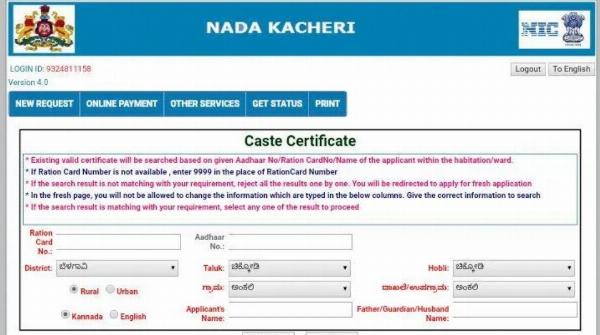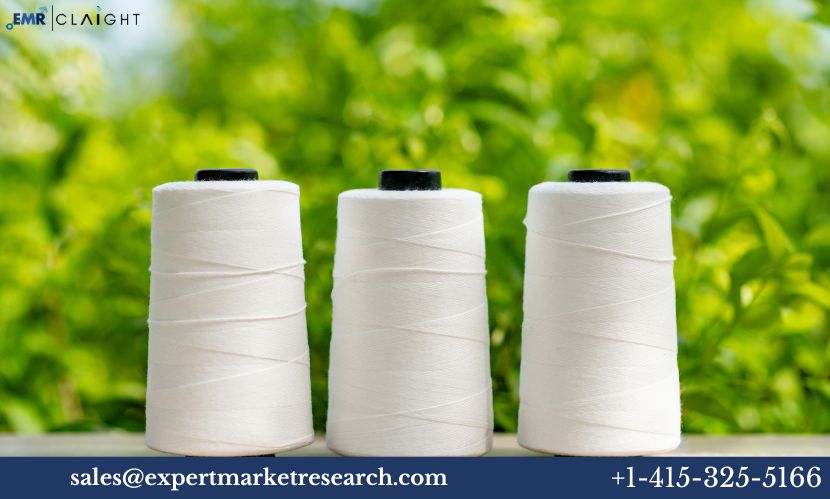We’re back with the latest edition of our series, @Me Next Time, where we invite Team Sprout and some of our favorite social experts to share how they really feel about the latest trends.
This time, we’re breaking down what brands get wrong about influencer sourcing. We’ve all seen those overly-scripted, cringe-worthy sponsored videos. The ones where the influencer completely changes their tone and content style to talk about a product they would never use. The influencer seems more like a paid actor than a content creator.
We sat down with Greg Scavuzzo, Director of Product Marketing and senior player in the influencer marketing space, to get his thoughts on why so many brands source influencers the wrong way. “Forced partnerships usually lead to extremely underwhelming results—and often do more harm for your brand than good,” laments Scavuzzo.
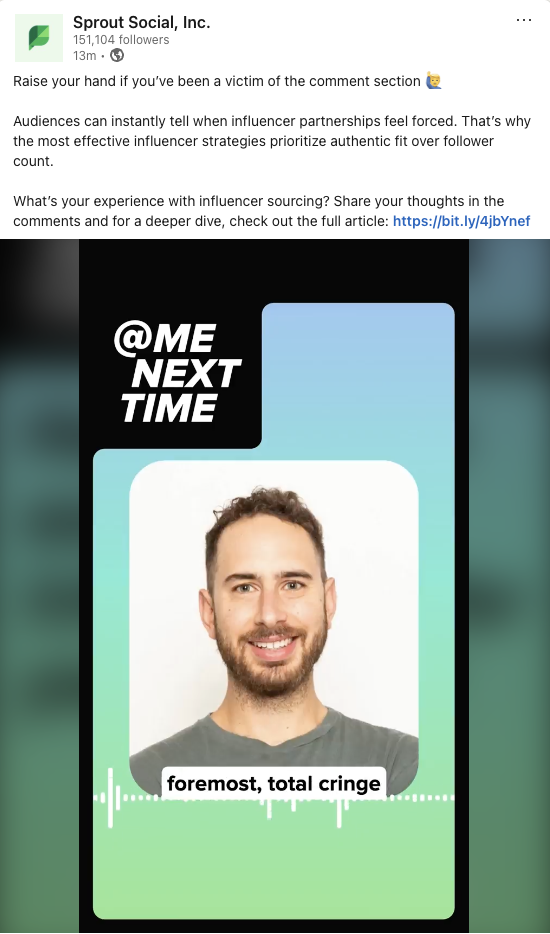
So what should brands do instead? Marketers need to align their influencer sourcing techniques with evolving algorithms, and trust that influencers know how to create content that resonates and drives engagement.
Why some brands think influencer marketing doesn’t work
There is plenty of proof that influencer marketing works. Sprout’s own Q1 2025 Pulse Survey found that marketers say influencer content outperforms brand content in terms of reach, engagement and conversion. The same survey revealed 65% of marketers are very confident they can prove the business impact of influencer marketing, while another 60% plan to partner with more influencers this year compared to 2024.
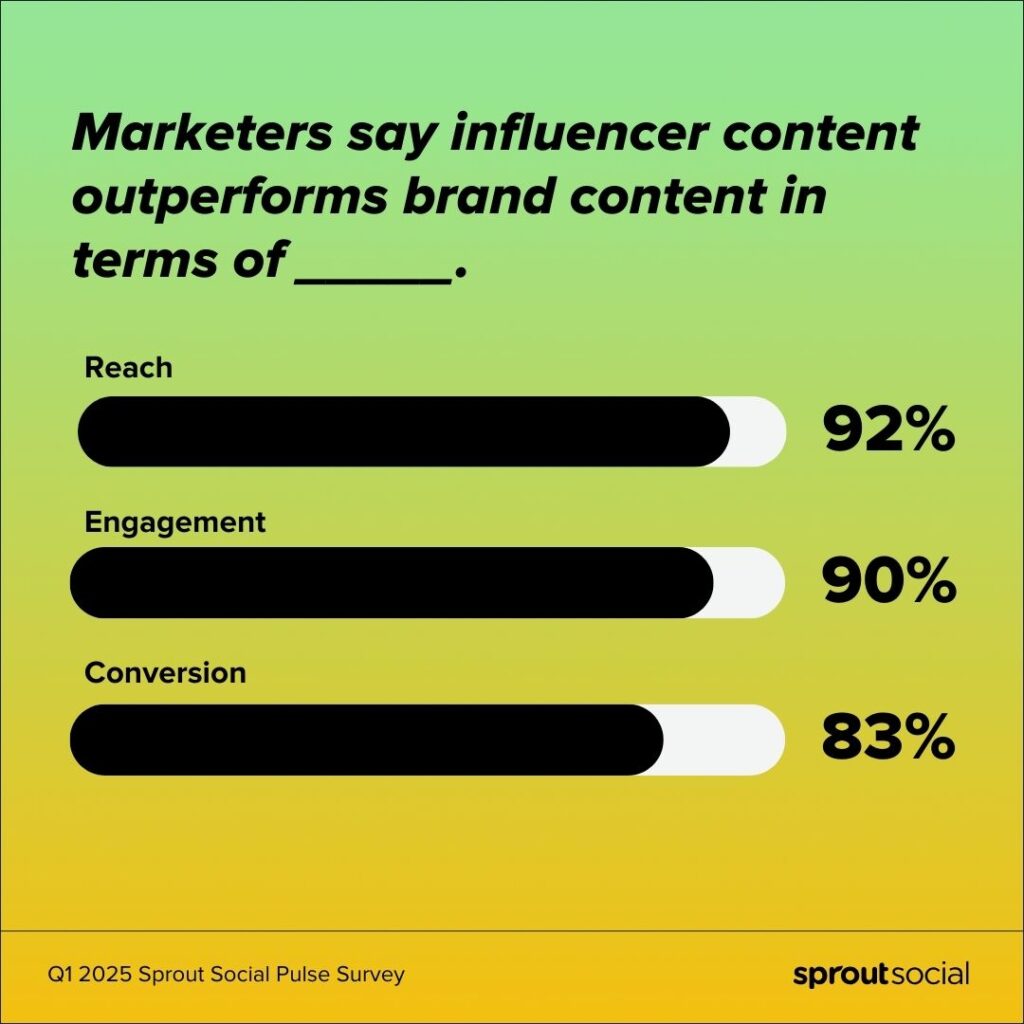
But what if you’ve tried it, and it didn’t deliver compelling results? It can be tempting to write-off influencer marketing entirely, thinking it just doesn’t resonate with your audience or industry.
But there might be another reason your strategy fell flat. As Scavuzzo says, “Marketers have traditionally led with filtering for creators via quantitative profile attributes—like follower size, audience demographics, engagement rate or location—because distribution used to be all about who followed a particular influencer. That approach no longer addresses how the networks serve up content, or how users consume social. When teams over-rely on these attributes, collaborations underperform and leadership might be quick to abandon your program.”
Don’t fear changing algorithms, embrace them with AI
As Scavuzzo alluded, algorithms are becoming increasingly niche as networks create experiences customized to each user based on the content they engage with most. Quantitative data doesn’t tell the full story of what kind of content influencers create, or who it will resonate with.
“Consumer behavior on social has significantly changed. Users engage with content from experts and personalities who consistently speak on a specific topic that resonates with them. And more and more, they’re seeking this content out in For You Pages, and they're being served content from creators they don't even follow in their main feed,” says Scavuzzo.
Think about your own For You Page. It’s built around topics you find interesting, not necessarily your location, gender, age or the size of the creators you typically interact with. That’s exactly why brands need to lead with the topics influencers talk about when they conduct their research.
What does this look like? Historically it’s been highly manual, even with influencer marketing management software. Marketers had to rely on complex filtering, spend significant time vetting and comb through piles of data to ensure quality results. And even after logging hours of manual work, the influencer could still end up being a poor brand safety fit.
Thankfully, that’s changing. Emerging AI-powered natural language discovery helps brands search based on the content they want to create. This approach ensures influencer content actually matches up with your brand values and campaign messaging—driving much stronger results.
Tour Sprout Social Influencer Marketing Now
Stronger influencer sourcing = long-lasting influencer performance
Building partnerships with influencers who are the right fit for your brand is a long-term investment that can help you weather an evolving marketing landscape.
Traditional tactics like paid search are becoming less effective—cost per clicks are more expensive and conversion rates are steadily falling. Yet, influencer marketing continues to grow, estimated to be worth half-a-trillion dollars by 2027. Already, 49% of consumers make a purchase inspired by an influencer at least once a month, per The Influencer Marketing Report. Some consumers make weekly—or even daily—purchases.
Why do some posts make them hit “add to cart” when others don’t? While the word authentic gets thrown around often, audiences aren’t looking for 100% authenticity—but they do want content to feel on-brand for the influencer. Scavuzzo points out, “Consumers are smart. They recognize an ad or a paid partnership, even when it’s coming from an influencer they follow and trust. But influencers can afford brands something that has been nearly impossible to achieve to date: the ability to bring a product or customer service experience to life in a more genuine way.”
Which is why effective influencer sourcing is so critical. Sponsored content needs to feel like a natural fit for the influencer, and they should already have some share of voice in your industry. Scavuzzo adds, “Some of the best influencer marketing campaigns are being led by brands and influencers who have cultivated long-term relationships and collaborate offline too.” The Influencer Marketing Report backs this up, as the report found that 80% of consumers would be more likely to buy from brands who partner with influencers beyond social content.
“Take Blueland’s collaboration with forager, environmental activist and influencer Alexis Nikole. The eco-friendly CPG brand and influencer have co-created a handsoap line that sold out twice. The partnership works so well because it’s values-aligned, and Blueland allows Alexis Nikole the freedom to create the content she knows resonates with her audience. They look to her as the expert for what her followers want to see, and trust that she’s the right advocate for their brand,” says Scavuzzo.
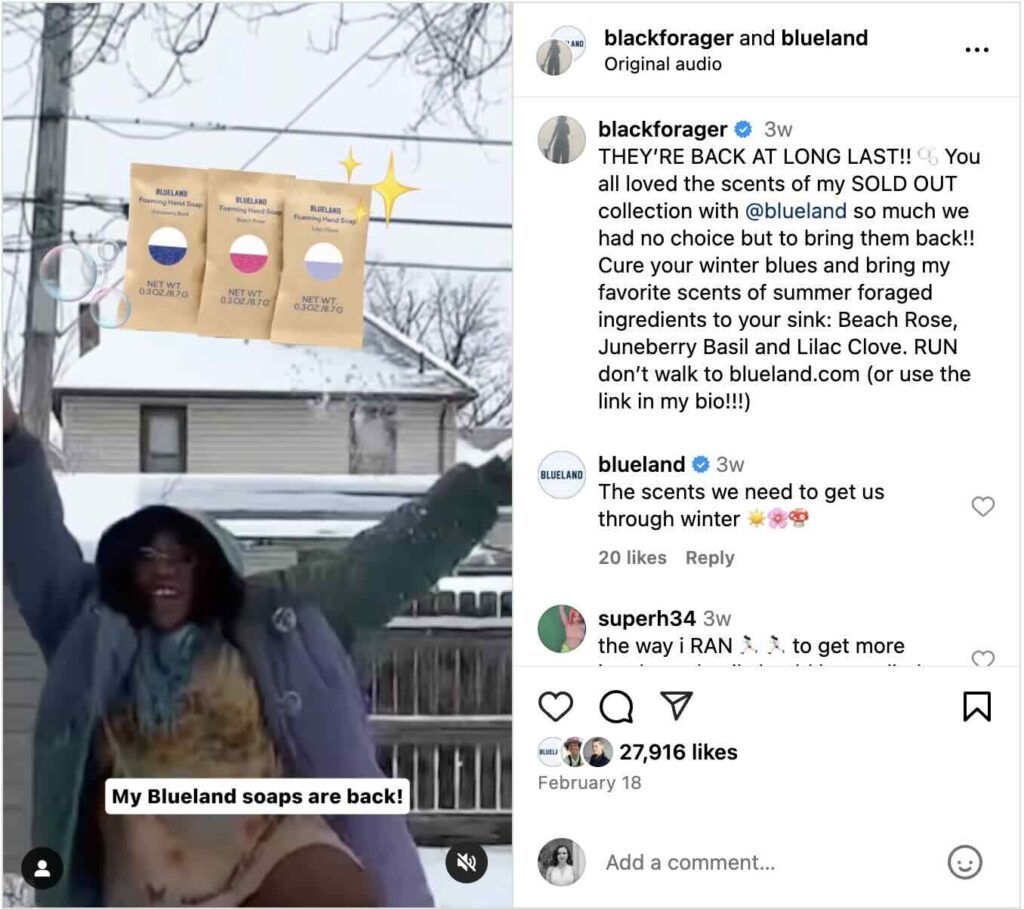
Find the right fit, not just the right metrics
Influencer marketing is one of the most effective ways to reach consumers—many brands are just following the wrong blueprint. The strongest partnerships are no longer based on profile stats or follower counts. They’re built on shared values, mutual trust and content that actually fits the way people consume social today.
By leveraging tools like AI-powered discovery and leading with a content-first approach that prioritizes topical relevance over quantitative metrics, marketers can find the right voices to tell their stories—and make those stories stick. As Scavuzzo says, “The best results come when brands treat influencers like strategic partners, not just broadcast channels.”
It’s time to move beyond the surface. Source smarter. Collaborate deeper. And let your influencer strategy evolve with the platforms—and people—it’s built for.
Looking for more resources to reinvigorate your strategy? This influencer toolkit will set you up with the resources you need to begin, budget and build a strategy optimized for ROI.
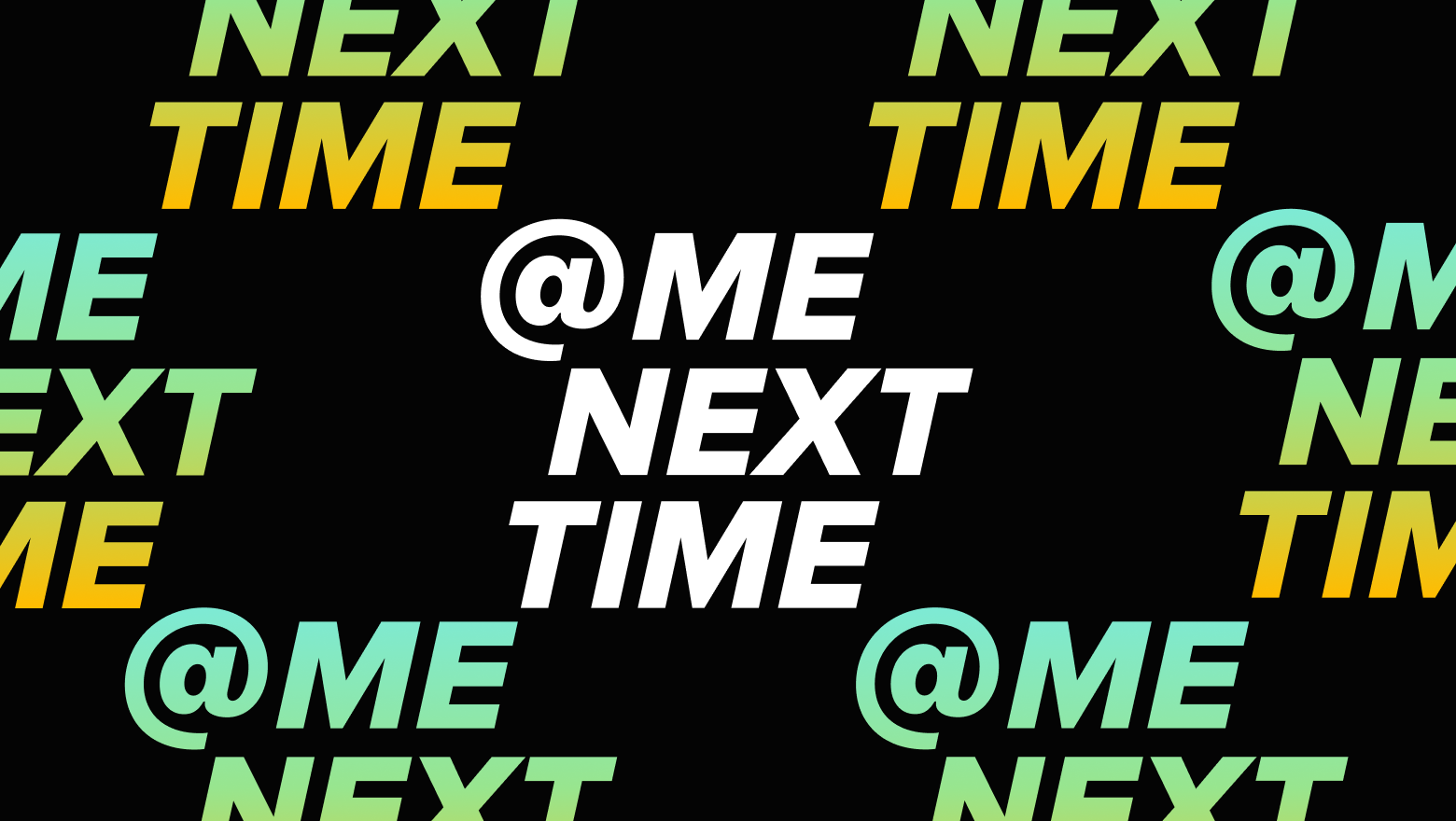
The usage of influencers in marketing is often fared to be less effective than expected due inadequate understanding- What brands get wrong about this process lies primarily with the lack, or delusion that bigger follower count equals higher impact and better engagement.
Influencer sourcing isn't just about numbers; it’s essential to understand the underlying values and audiences that truly resonate with your brand, an area where many brands unfortunately stumble.
The common mistake that many brands make when sourcing influencers is often relying solely on followers count and engagement rates, overlooking the authenticity of relationships built.
The overreliance on sheer numbers of influencers, rather than prioritizing those with genuine engagement and authenticity in their content creation for targeted customer demographics—that's a common mistake brands make when sourcing influencer partnerships.
Influencer sourcing by many brands is often flailled because of an emphasis on followers' count rather than engagement authenticity, leading to a lackluster impact and wasted marketing resources.
The fatal flaw in many brands' approach to influencer sourcing is their tendency towards superficial engagement, neglecting genuine authenticity and the power of human connection when fostering partnerships.
Brands often make the mistake of solely relying on follower counts or engagement rates when sourcing influencers, neglecting crucial factors like alignment with brand values and audience fit – a short-sighted approach that fails to tap into true influence potential.
The common missteps that brands make in influencer sourcing often stem from a lack of genuine engagement, failing to align with the right values and audiences. Instead they rush into collaborations without understanding their own objectives or stressing authentic collaboration over sheer quantity.
In their quest for influence, many brands overlook the importance of authenticity and alignment with brand values when sourcing influencers. This often results in unnatural partnerships that lack genuine appeal or effectiveness.
Influencer sourcing often fails due to a lack of true understanding and alignment with brand values, creating an authenticity gap that alienates customers rather than engaging them.
The common mistake many brands make when it comes to influencer sourcing is largely relying on vanity metrics rather than focusing effectively, leading them into brand-dip relationships instead of strategic partnership alignments. This results in underwhelming engagement and limited ROI.
Influencer sourcing is often plagued by a tendency to focus on superficial reach and followers count, ignoring the importance of authenticity in brand alignment. This mishaps not only undermines campaign effectiveness but also damages品牌name’s reputation for insincerity.
Employer brands often overlook the importance of authenticity and genuine interaction when sourcing influencers, leading to campaigns that lack credibility in audience eyes.





